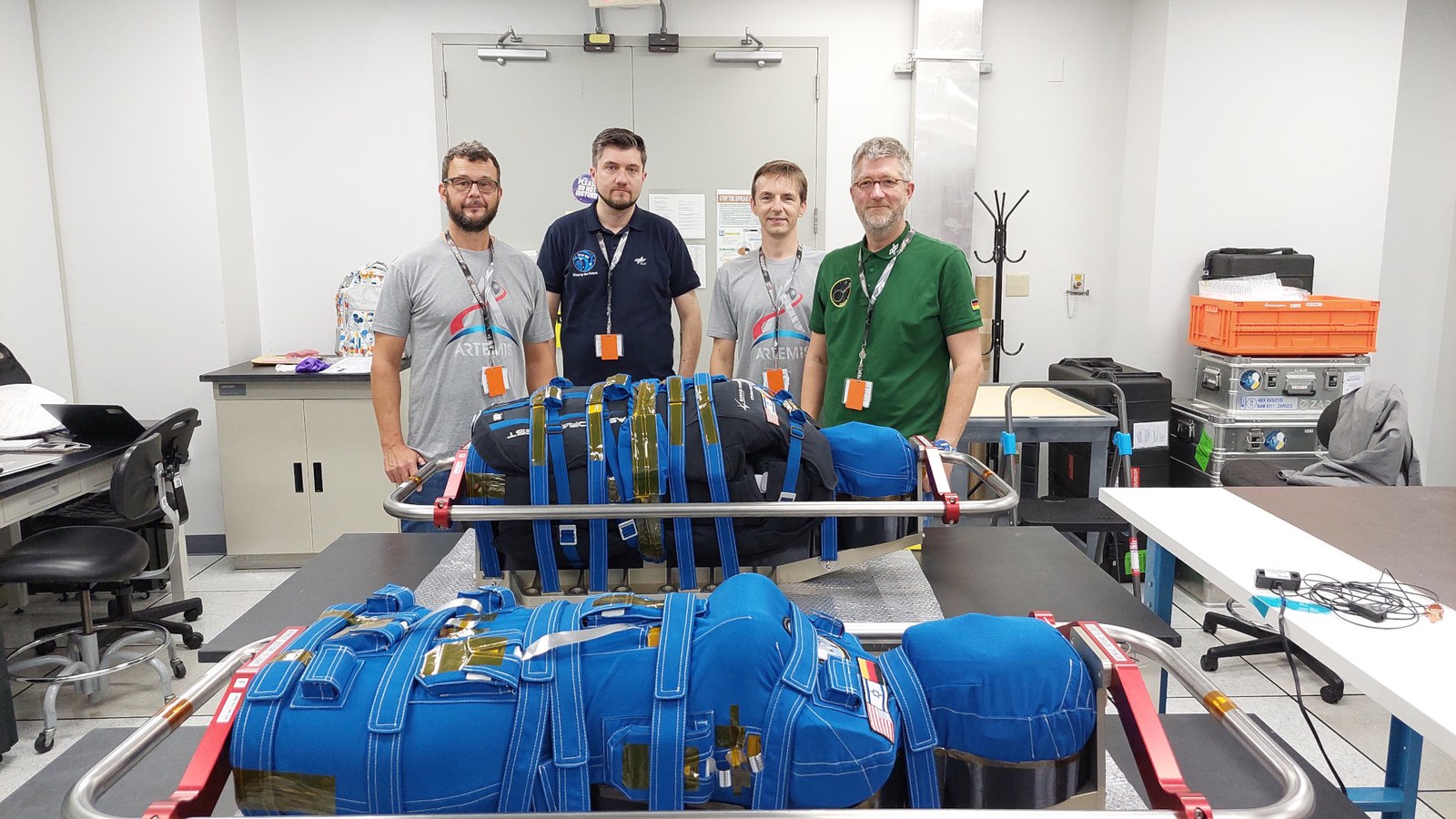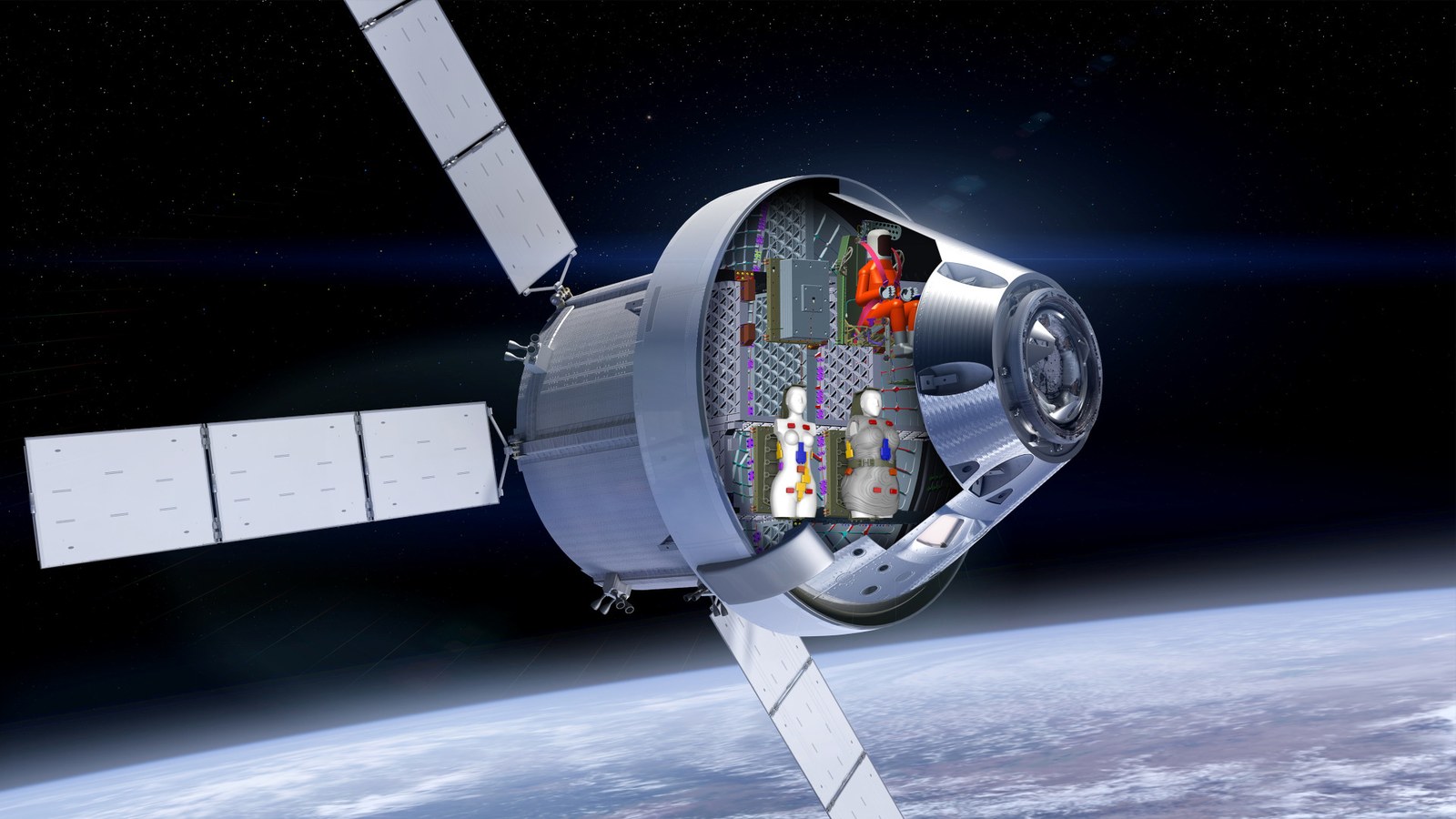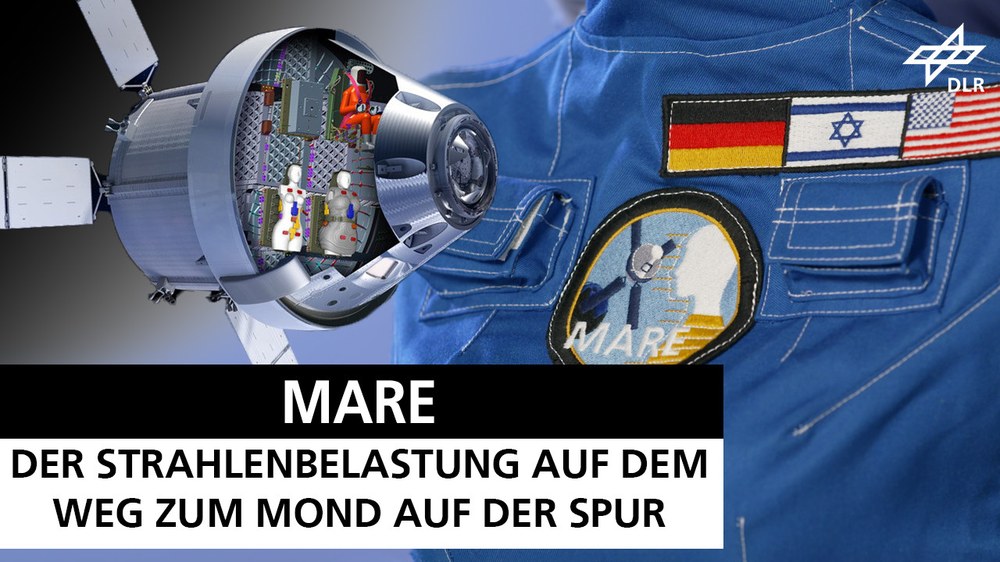'Boarding' for the Artemis I mission – Helga and Zohar are ready for their flight to the Moon


- The DLR MARE experiment’s radiation-measurement mannequins Helga and Zohar have been installed on the flight deck of the Orion spacecraft.
- The experiment uses two identical measuring mannequins, which will fly to the Moon on board NASA’s Artemis I mission, to investigate radiation exposure throughout the flight.
- MARE is the first experiment to measure the effects of radiation exposure on the female body beyond the orbit of the International Space Station (ISS).
- In general, women have a higher risk than men of developing cancer. It is therefore important to develop protective measures for the crews of future long-term missions, based on this data.
- An image gallery for the MARE experiment has been created on Flickr .
- Focus: Spaceflight, exploration, Moon, cosmic radiation
Three mannequins, a beagle and a sheep fly around the Moon in a giant rocket … extraordinary, isn’t it? This special crew is part of NASA’s Artemis I mission, scheduled to launch from Kennedy Space Center in Florida on 29 August 2022. On board are three mannequins, Helga and Zohar, two identical model females from the German Aerospace Center (Deutsches Zentrum für Luft- und Raumfahrt; DLR), and NASA’s Commander Moonikin Campos. They will test the spacecraft’s systems and collect data for future crewed missions. The beagle is none other than Snoopy, who will serve as a microgravity indicator. They will be accompanied by the ‘woolly astronaut’ Shaun the sheep. Helga and Zohar have now been successfully integrated into the Orion capsule and are awaiting their launch to the Moon. Matroshka AstroRad Radiation Experiment (MARE) is the largest radiation experiment to leave Earth orbit. It is designed to investigate exactly how radiation levels will affect female astronauts during a full lunar flight and determine what radiation protection measures might be helpful.
The #LunaTwins will investigate radiation exposure for future long-term missions
The twin mannequins, who will be featured on social media via the hashtag #LunaTwins are using built-in sensors to measure radiation exposure on their nearly 42-day flight around the Moon. Zohar will be wearing an AstroRad protective vest, which is being tested during this flight, while Helga will fly unprotected. Both mannequins are made of materials that mimic the bones, soft tissues and organs of adult women, so that the radiation dose can be measured in the organs that are particularly sensitive to radiation. They are each made up of 38 individual slices in which the sensors are integrated. “Last week, we assembled Helga and Zohar at NASA’s Kennedy Space Center and then handed them over to NASA for installation in Orion,” explains Thomas Berger, Project Manager at the DLR Institute of Aerospace Medicine in Cologne. “We are very pleased and also quite proud to have successfully completed this work and that the two mannequins have been installed in the Orion spacecraft by our NASA colleagues. It was and is a wonderful experience to work together on a common goal in this international team. Now, of course, we are very excited to see what radiation levels Helga and Zohar will measure during their flight around the Moon and back to Earth.”
MARE will be the first experiment to measure the radiation exposure to the female body beyond the orbit of the International Space Station ISS. The female body is more sensitive to the effects of ionising radiation than the male body. It is therefore important to develop protective measures for the crews of future long-term missions based on this data.
For the first time, MARE will also continuously collect measurement data that can be used to determine the radiation exposure inside the spacecraft at specific times during the flight to the Moon. This will be achieved using, among other things, 16 radiation measuring instruments developed by DLR – the DLR M-42.

MARE: Tracking radiation exposure on the way to the Moon
Your consent to the storage of data ('cookies') is required for the playback of this video on Youtube.com. You can view and change your current data storage settings at any time under privacy.
Forward to the Moon with Artemis
Artemis I is the first of a series of missions in NASA’s Artemis programme. The goal of this programme is to land humans on Earth’s natural satellite again after more than 50 years, establish a permanent base there together with international partners and build a space station in lunar orbit from which to launch crewed missions to more distant destinations, including Mars.
Artemis I is the first step on this path. On this uncrewed mission, all the newly developed systems will be tested regarding the interaction between the Orion spacecraft, the Space Launch System (SLS) and the ground systems. The safety of the astronauts is the top priority. This includes, in particular, protection against cosmic radiation, which is many times higher in space than on Earth – around 800 times higher on the Moon, for example. In order to be able to implement suitable protective measures for future long-term missions, it is important to accurately assess the radiation exposure. This is being researched during Artemis I with the MARE experiment.
The MARE experiment
The MARE experiment is led by DLR. The main project partners are the Israeli Space Agency (ISA), the Israeli company StemRad, which developed the AstroRad protective vest, Lockheed Martin and NASA. Due to its complexity and the scale of international collaboration with many different universities and research institutions in Europe, Japan and the USA, MARE is the largest experiment designed to determine radiation exposure for astronauts that has ever flown beyond low-Earth orbit. The measurements during Artemis I will provide fundamental data for assessing the radiation risk and enabling safe human exploration of space.

